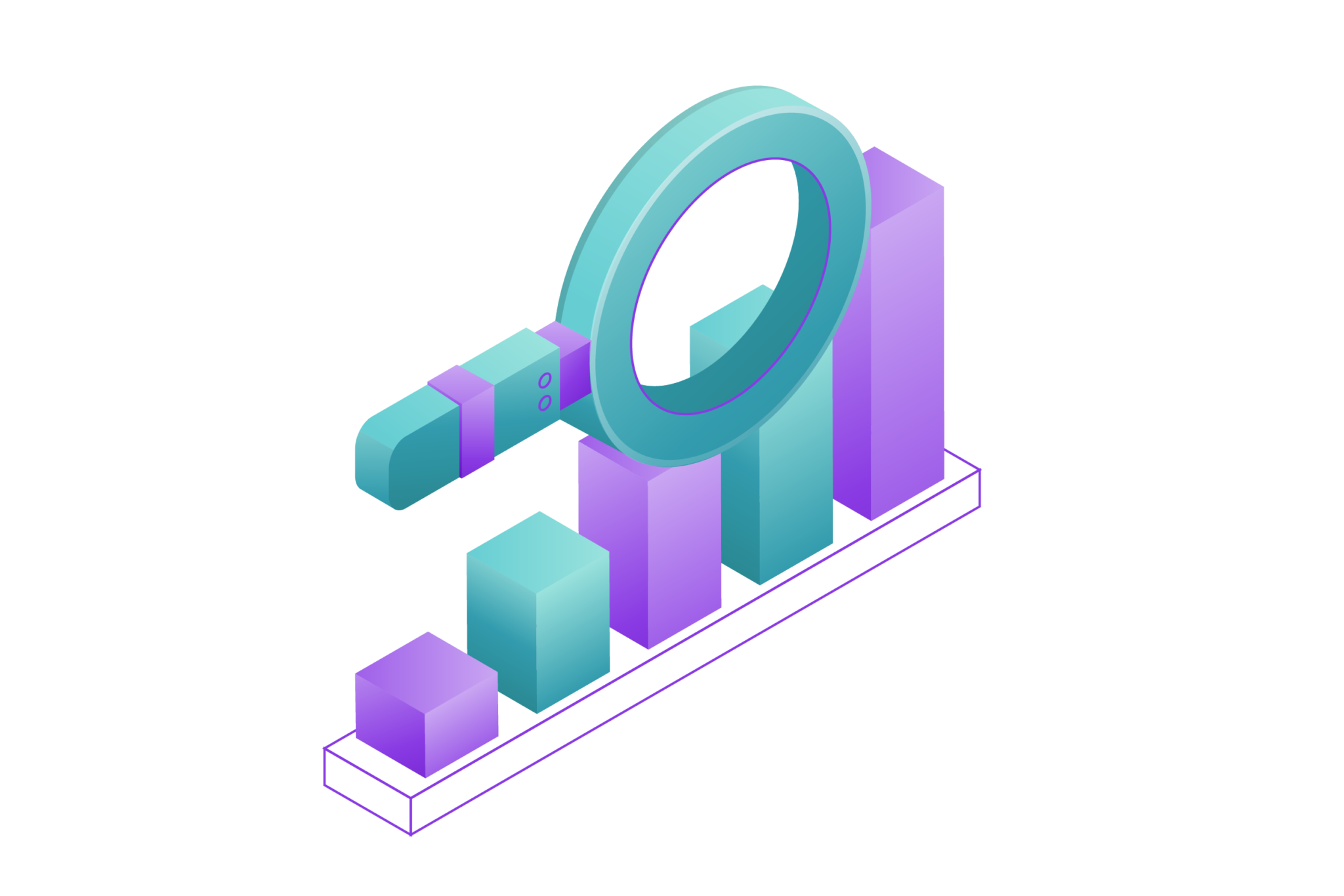
In the fast-paced world of finance, staying updated with the latest developments in quantitative analysis is crucial. As we step into 2025, the landscape of quantitative analysis continues to evolve, driven by advancements in technology and new data-driven approaches. This article aims to guide you through the best sources for quantitative analysis news, ensuring you stay informed and ahead of the curve.
Quantitative analysis, a cornerstone in financial decision-making, relies on mathematical and statistical models to understand market behavior and predict future trends. Whether you are a finance professional, a student, or someone keen on understanding the financial markets, having access to reliable and insightful news sources is essential.
In this article, we will explore the top seven quantitative analysis news sources you should follow in 2025. Additionally, we will delve into the importance of staying updated in this field, the key trends to watch, how to choose trustworthy news sources, and the role of quantitative analysis in modern finance. Let’s begin our journey into the world of quantitative analysis.
The Importance of Staying Updated in Quantitative Analysis

In the ever-evolving field of finance, staying updated with the latest news and trends in quantitative analysis is essential for several reasons:
Informed Decision-Making
Staying informed helps finance professionals make better decisions based on the latest data and trends. In quantitative analysis, the precision and relevance of data are crucial. Being updated with the latest findings, tools, and methodologies ensures that professionals can interpret and leverage data accurately. This leads to more effective risk management, better investment strategies, and improved overall financial performance. For instance, if a new algorithm is developed that predicts market movements more accurately, knowing about it early can give a significant advantage.
Competitive Edge
Keeping up with the latest developments provides a competitive edge, enabling professionals to apply the most recent and effective strategies. In a field as competitive as finance, where margins can be thin and the stakes high, having access to the latest quantitative analysis techniques can set a professional or a firm apart. This competitive edge can manifest in various ways, such as more accurate forecasting, improved trading strategies, or the ability to offer clients more sophisticated financial products. Those who stay updated are more likely to innovate and lead rather than follow.
Adaptation to Changes
The financial market is dynamic. Staying updated allows professionals to adapt to changes quickly and efficiently. Market conditions can shift rapidly due to various factors, including economic policies, geopolitical events, and technological advancements. By staying informed, finance professionals can anticipate these changes and adjust their strategies accordingly. For example, if there’s a shift towards more algorithmic trading in the market, being aware of this trend early allows professionals to develop or adopt the necessary tools and skills to remain relevant and effective.
Also Read: 17 Best Crypto Staking Platforms to Know in 2025
Professional Growth
Continuous learning and staying informed contribute to professional growth and expertise in the field. In the realm of finance, career advancement is often linked to one’s ability to stay current with industry developments and continuously improve their skill set. Engaging with the latest quantitative analysis research and news not only enhances one’s knowledge but also demonstrates a commitment to professional development. This can lead to new career opportunities, recognition as an expert in the field, and the ability to mentor and lead others.
By understanding the importance of staying updated in quantitative analysis, finance professionals can better appreciate the value of regularly engaging with quality news sources. This commitment to staying informed not only benefits individual careers but also enhances the overall efficiency and innovation within the financial industry.
7 Best Quantitative Analysis News to Check this 2025

Staying abreast of the latest developments in quantitative analysis can significantly impact your understanding and application of financial strategies. Here are the seven best news sources you should follow in 2025:
1. Bloomberg Quantitative Research News
Bloomberg provides comprehensive coverage of financial markets, including quantitative analysis. Their in-depth articles and expert opinions make it a go-to source for many finance professionals. Bloomberg’s dedicated team of analysts and journalists delve into the latest quantitative strategies, model developments, and data analysis techniques. They also provide real-time data and analytics tools that help professionals stay on top of market movements and emerging trends. Additionally, Bloomberg hosts webinars and conferences featuring leading experts in the field, offering valuable insights and networking opportunities.
2. Financial Times Quantitative Analysis Section
The Financial Times offers a dedicated section for quantitative analysis, featuring the latest news, trends, and expert insights. Known for its rigorous journalism and in-depth analysis, the Financial Times provides articles that cover both the technical and practical aspects of quantitative finance. From detailed reports on new quantitative models to interviews with industry leaders, the Financial Times ensures its readers have access to high-quality information that can inform their financial strategies. The publication also offers special reports and series that delve into specific areas of interest within quantitative analysis.
3. Reuters Quantitative Finance News
Reuters is known for its timely and accurate reporting. Their quantitative finance news segment covers the latest developments and research in the field. Reuters’ extensive global network of journalists ensures that readers are informed about international trends and events that may impact quantitative analysis. The publication provides not only news articles but also comprehensive research reports and data visualizations that help readers understand complex quantitative concepts. Reuters’ commitment to accuracy and speed makes it an invaluable resource for professionals who need up-to-date information to make informed decisions.
4. The Wall Street Journal Quant Analysis Reports
The Wall Street Journal provides extensive coverage of quantitative analysis, offering detailed reports and expert commentary. Known for its authoritative voice in financial journalism, the Wall Street Journal offers insights into how quantitative analysis is shaping markets and investment strategies. Their articles often include case studies, expert opinions, and data-driven analyses that provide a deeper understanding of market dynamics. Additionally, the Wall Street Journal frequently publishes special features and investigative reports that highlight significant trends and innovations in quantitative finance.
5. Quantitative Finance Magazine
This specialized publication focuses solely on quantitative finance, providing in-depth articles, research papers, and news updates. Quantitative Finance Magazine is a must-read for anyone deeply involved in the field. The magazine covers a wide range of topics, from theoretical developments to practical applications of quantitative methods. Each issue includes contributions from leading academics and practitioners, offering readers access to cutting-edge research and expert insights. The magazine also features book reviews, conference reports, and interviews with key figures in the industry.
6. ArXiv.org Quantitative Finance E-prints
ArXiv.org is a repository of research papers, including a dedicated section for quantitative finance. It’s an excellent resource for accessing cutting-edge research and preprints. Researchers and professionals can find the latest papers on various topics within quantitative finance, often before they are published in peer-reviewed journals. ArXiv.org allows users to stay ahead of the curve by providing access to innovative research and new methodologies as they emerge. The platform also enables users to interact with authors and engage in discussions, fostering a collaborative environment for knowledge sharing.
7. Seeking Alpha Quant Analysis
Seeking Alpha offers a platform for finance enthusiasts and professionals to share their insights. Their quantitative analysis section features articles from experts in the field. This user-generated content model allows for a diverse range of perspectives and approaches to quantitative analysis. Contributors include experienced analysts, academics, and practitioners who provide detailed analyses, model reviews, and practical tips. Seeking Alpha’s community-driven approach encourages engagement and discussion, making it a valuable resource for learning and staying updated on the latest trends and developments in quantitative analysis.
These sources provide a wealth of information, ensuring you stay informed about the latest trends and developments in quantitative analysis.
Key Trends in Quantitative Analysis for 2025
As we move into 2025, several key trends are shaping the field of quantitative analysis. Staying informed about these trends can help finance professionals and enthusiasts adapt to changes and leverage new opportunities. Here are the most significant trends to watch:
Artificial Intelligence and Machine Learning Integration
The integration of artificial intelligence (AI) and machine learning (ML) in quantitative analysis is accelerating. These technologies enhance the ability to process large datasets, identify patterns, and make predictions with greater accuracy. AI and ML algorithms are being used to develop sophisticated trading models, automate trading strategies, and improve risk management. For instance, deep learning techniques are now being applied to time series forecasting, enabling more precise predictions of market movements. As these technologies continue to evolve, their impact on quantitative analysis will only grow, offering new tools and methods for financial analysis.
Increased Use of Alternative Data
Traditional data sources, such as financial statements and market prices, are being supplemented by alternative data. This includes data from social media, satellite images, and even weather reports. Alternative data provides additional insights that can improve the accuracy of quantitative models. For example, social media sentiment analysis can help predict market trends by gauging public opinion. As the availability and quality of alternative data improve, it will become an integral part of quantitative analysis, helping professionals gain a competitive edge by leveraging unique and often underutilized information sources.
Regulatory Changes and Their Impact
Regulatory changes are having a significant impact on quantitative analysis. As financial markets become more regulated, compliance with new regulations requires adaptation in modeling and analysis techniques. For instance, the implementation of the General Data Protection Regulation (GDPR) and other data privacy laws has affected how data is collected and used. Quantitative analysts need to stay updated on these regulations to ensure their models comply with legal standards. Additionally, understanding the implications of regulatory changes can help professionals anticipate market shifts and adjust their strategies accordingly.
Advancements in Data Visualization Tools
Data visualization tools are becoming more advanced, making it easier to interpret complex data sets and communicate findings. Tools like Tableau, Power BI, and Python’s visualization libraries (e.g., Matplotlib, Seaborn) are increasingly being used in quantitative analysis. These tools allow analysts to create interactive and dynamic visualizations that can reveal insights that might be missed with traditional static charts. Improved data visualization helps in better decision-making and enables clearer communication of complex quantitative concepts to stakeholders, making the analysis more accessible and actionable.
Rise of Quantum Computing
Quantum computing is on the horizon as a transformative technology for quantitative analysis. Although still in its early stages, quantum computing promises to solve complex optimization problems much faster than classical computers. For example, quantum algorithms can potentially revolutionize portfolio optimization, risk analysis, and derivative pricing. Financial institutions are beginning to invest in quantum computing research, exploring its potential applications in finance. As quantum computing technology matures, it could provide unprecedented computational power, significantly advancing the field of quantitative analysis.
Growth of Sustainable and ESG Investing
Environmental, Social, and Governance (ESG) factors are becoming increasingly important in investment decision-making. Quantitative analysts are developing new models to incorporate ESG criteria into their analysis. This trend is driven by growing investor demand for sustainable investing and the recognition that ESG factors can impact financial performance. Quantitative models that integrate ESG data can help identify investment opportunities that align with sustainability goals while also delivering strong returns. As ESG considerations become more mainstream, they will play a larger role in quantitative analysis.
Collaboration and Open-Source Contributions
The quantitative analysis community is increasingly embracing collaboration and open-source contributions. Platforms like GitHub and QuantConnect enable analysts and developers to share code, models, and tools, fostering a collaborative environment. Open-source projects allow for faster innovation and the democratization of quantitative analysis techniques. By participating in these communities, professionals can stay updated on the latest advancements, contribute to the development of new methods, and benefit from the collective knowledge and expertise of the global quantitative analysis community.
Understanding these trends is crucial for anyone involved in quantitative analysis. They highlight the ongoing evolution of the field and underscore the importance of staying informed and adaptable.
How to Choose Reliable Quantitative Analysis News Sources

Choosing reliable news sources for quantitative analysis is crucial to ensure you are getting accurate, relevant, and timely information. Here are some tips to help you select trustworthy sources:
Reputation and Credibility
- Look for news sources with a strong reputation and credibility in the finance industry.
- Trusted publications like Bloomberg, Reuters, and The Wall Street Journal are known for accurate and unbiased information.
- Check the credentials of the authors and the history of the publication.
Expert Contributions
- Choose sources that feature contributions from industry experts and academics.
- Publications with articles and insights from well-known quantitative analysts and researchers provide more accurate and valuable information.
Up-to-Date Information
- Ensure the news source regularly updates its content with the latest information.
- Reliable sources frequently publish new articles, reports, and analyses to keep readers informed about the latest trends and developments.
Comprehensive Coverage
- Look for sources that offer comprehensive coverage of quantitative analysis and related topics.
- Reliable news sources should cover a wide range of subjects, including new methodologies, data analysis techniques, market trends, and regulatory changes.
Data Transparency
- Trustworthy news sources should provide transparency about the data and methodologies they use.
- Look for articles that explain the data sources, statistical methods, and models used in their analyses.
- Sources that provide detailed explanations and references to original data sources are more likely to be reliable.
Peer Reviews and Feedback
- Consider sources that incorporate peer reviews and feedback mechanisms.
- Academic journals and publications that use peer review processes ensure that the information published is scrutinized by experts in the field.
- Platforms that allow for community feedback and discussion can help validate the information and provide different perspectives.
Avoiding Sensationalism
- Be cautious of sources that use sensationalist headlines or overly optimistic predictions.
- Reliable news sources provide balanced and objective reporting without resorting to hype or exaggeration.
- Look for sources that maintain a sober and factual tone in their reporting.
By following these tips, you can identify reliable quantitative analysis news sources that will help you stay informed and make better decisions. Ensuring that the information you rely on is accurate and trustworthy is a crucial step in maintaining a high standard of practice in the field of quantitative analysis.
Also Read: How to Succeed in a Quant Hedge Fund: Strategies and Tips
The Role of Quantitative Analysis in Modern Finance
Quantitative analysis plays a crucial role in modern finance, impacting various aspects of financial markets and decision-making processes. Here are some key roles it plays:
Investment Strategies
- Quantitative analysis helps in developing sophisticated investment strategies.
- It involves the use of mathematical models to identify market trends and predict future price movements.
- This approach can help in optimizing portfolios, managing risks, and achieving better returns.
Risk Management
- Quantitative techniques are essential for assessing and managing financial risk.
- By analyzing historical data and using statistical models, financial professionals can predict potential losses and mitigate risks.
- Techniques such as Value at Risk (VaR) and stress testing are commonly used to evaluate risk exposure.
Algorithmic Trading
- Quantitative analysis forms the backbone of algorithmic trading.
- Algorithms are designed to execute trades based on predefined criteria, which are often derived from quantitative models.
- This approach allows for high-frequency trading, increasing market efficiency and liquidity.
Market Research and Forecasting
- Quantitative methods are used to conduct market research and forecast economic trends.
- By analyzing large datasets, quantitative analysts can identify patterns and make predictions about future market behavior.
- This information is crucial for making informed business and investment decisions.
Performance Measurement
- Quantitative analysis is used to measure the performance of investment portfolios and financial products.
- Metrics such as Sharpe ratio, alpha, and beta are calculated to evaluate performance relative to risk.
- This helps investors understand the effectiveness of their investment strategies.
Regulatory Compliance
- Quantitative analysis aids in ensuring regulatory compliance.
- Financial institutions use quantitative models to meet regulatory requirements for capital adequacy, liquidity, and stress testing.
- This helps in maintaining financial stability and preventing systemic risks.
Financial Product Development
- Quantitative techniques are employed in the development of new financial products, such as derivatives and structured products.
- By modeling various scenarios and market conditions, quantitative analysts can design products that meet specific investment goals and risk profiles.
Behavioral Finance
- Quantitative analysis also contributes to the study of behavioral finance.
- By examining how psychological factors influence market behavior, analysts can develop models that account for irrational behavior and market anomalies.
- This leads to a better understanding of market dynamics and investor behavior.
Quantitative analysis is integral to modern finance, providing the tools and methodologies needed for effective decision-making, risk management, and market analysis. Its application spans across various domains, making it a vital skill set for finance professionals.
Conclusion
As we move into 2025, the landscape of quantitative analysis is evolving rapidly due to technological advancements and changing market dynamics. Staying updated is crucial for finance professionals, students, and anyone interested in financial markets. Key trends such as AI and machine learning integration, the use of alternative data, and the rise of quantum computing are reshaping the field, providing new tools and enhancing financial analysis accuracy.
Collaboration and open-source contributions are fostering innovation and inclusivity, while the growing importance of sustainable and ESG investing highlights the need for adaptable quantitative models. Staying informed about these trends and regulatory changes will help professionals navigate modern finance complexities and make informed decisions. In this dynamic environment, staying adaptable and well-informed is essential for success in quantitative analysis.
Disclaimer: The information provided by Quant Matter in this article is intended for general informational purposes and does not reflect the company’s opinion. It is not intended as investment advice or a recommendation. Readers are strongly advised to conduct their own thorough research and consult with a qualified financial advisor before making any financial decisions.

Joshua Soriano
As an author, I bring clarity to the complex intersections of technology and finance. My focus is on unraveling the complexities of using data science and machine learning in the cryptocurrency market, aiming to make the principles of quantitative trading understandable for everyone. Through my writing, I invite readers to explore how cutting-edge technology can be applied to make informed decisions in the fast-paced world of crypto trading, simplifying advanced concepts into engaging and accessible narratives.
- Joshua Soriano#molongui-disabled-link
- Joshua Soriano#molongui-disabled-link
- Joshua Soriano#molongui-disabled-link
- Joshua Soriano#molongui-disabled-link
